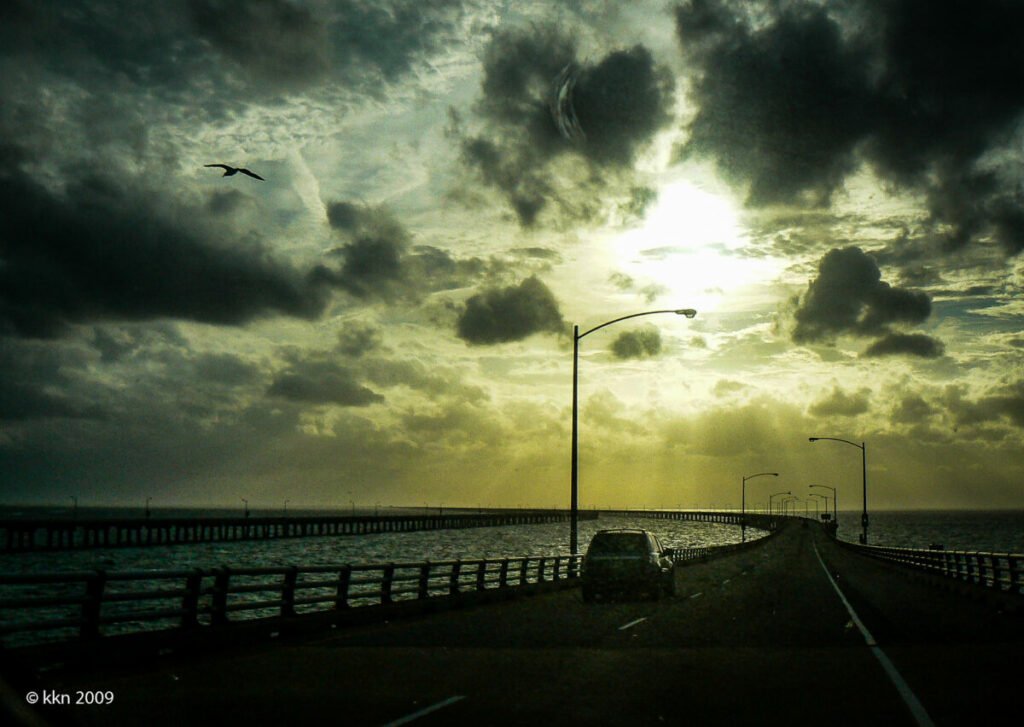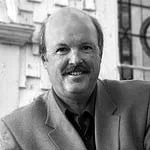Something there is that doesn’t love a bridge. At least on Virginia’s Eastern Shore. Oh, when I lived there, we were proud of the engineering marvel that connects the waning end of the Delmarva Peninsula to the Hampton Roads metropolis across the Chesapeake Bay. With two tunnels, four high bridges, and twelve miles of trestle bridge across the mouth of the nation’s largest estuary, the Chesapeake Bay Bridge-Tunnel is an impressive structure. But natives of the Shore have always viewed it with some ambivalence, much as they have viewed the rest of the land “across the Bay.”
Prior to 1964, when the bridge-tunnel opened, the most common way to reach our little sandbar was by ferry. The car trip now takes twenty minutes, but the ferries involved waiting at the dock and a ninety minute passage, during which many a serendipitous tale emerged. Romances blossomed on those ferries. Deals were struck. And loved ones made their final voyage to the Norfolk hospital. No one says that they miss those days, but the sight of the old ferry slip never fails to elicit a memory from those who knew that time.
I had come to the Shore from the other side of the bridge. The land beneath my previous homes was rocky, difficult, and substantial. On the Shore, islands shift with a winter storm, converting coastal trees into sand-blasted trunks lying prostrate by back-bay marshes, their limbs petitioning the heavens. As the sands roll back toward the mainland, the shells of ancient, giant oysters emerge in the surf. This is oldest Virginia, but ever new.
The thin ribbon of the bridge passes over wild waters where dolphins often play and where unmoored sailboats and barges, broken from their bonds, crash against pilings and head out to sea. In fog and haze the land disappears once you reach the middle of the bridge and you could imagine you were on a transoceanic highway. In storms, waves crash on the artificial islands where the tunnels emerge spraying your vehicle like a soundstage re-creation of a pirate epic.

Many fear the bridge on their first transit. A year before I moved to the Shore, a Pepsi truck careened through a guardrail into the drink, its driver lost at sea. Such tales haunt you, rare though they are. On cold winter nights with the bay roiling like a thousand blanketed serpents, you find yourself making contingency plans for such an event. Or just accepting that you would join the Pepsi man in his watery grave.
But now I see the bridge as a tether rope to one of the last sane places on earth. My blood pressure lowers rather than rises as I leave the toll booth at Virginia Beach and the land disappears beneath the bridge. Coming down off the high rise to Fisherman’s Island, the first of the string of islands, my shoulders relax.
There is craziness there, as everywhere. The craziest thing being that people live there at all, what with disaster always just one fierce storm away and the rising tides of climate change threatening to do them in for good. But communities have clung to this land, like oysters in their rocks. Many waters cannot quench love, so the Bible says, nor, it seems, the peoples of this Shore. They feed on an awareness that we are here by grace, dependent on what the tides bring and sustained despite what the tides take.
So forgive the suspicion of the bridge. It’s not that it isn’t appreciated. But the most important things are never found in the rapid transit or the grand destination. They’re often in the roil and tumble of a place that is known and well-inhabited. And Shore folks are just not sure those things are found on the other side of that bridge.
***A version of this essay appeared originally in Topology magazine.***

Share this post with your friends.

